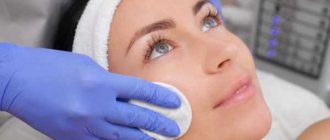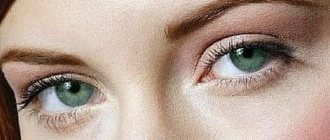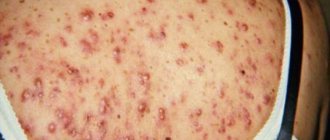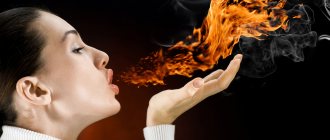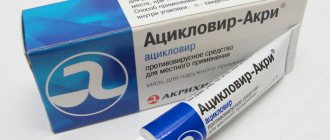After receiving burns of various stages, the process of suppuration may develop in the wound. The source of infection is improper treatment, which leads to infection. Accumulated pus can lead to necrosis of muscle and epithelial tissue or even gangrene. You must immediately seek help from a medical facility where burns are diagnosed.
Treatment of weeping wounds after burns
A weeping burn must be treated carefully. In order to reduce the risk of adverse events, it is necessary to thoroughly rinse the injured areas. Carefully remove dust, dirt and pus. A disinfectant medication is applied to damaged tissue. For this manipulation, antibacterial agents such as betadine are used. Hydrogen peroxide has a good effect. If this solution is not available, then soapy water can be used. The skin around the injury site is lubricated with alcohol solutions of brilliant green or iodine. This is done to dry the edges of the damage and prevent infection. The next step is to protect the wound from pathogenic flora. To do this, apply a bandage. If the burn penetrates deeply, you must take painkillers. In some cases, surgery cannot be avoided.
How to treat each stage?
Wet-type injuries have the following periods: the stage of inflammation, recovery and scarring.
So how to treat weeping wounds after a burn? During the inflammatory process, antiseptics are applied to the wound. You can use any available one. After this manipulation, it is necessary to apply a bandage made of sterile material, which will prevent the entry of moisture.
The fluid that flows from the affected area helps restore the wound and speeds up the healing process. During this period, it is necessary to change the dressing as often as possible. If excess moisture is released, then healing is carried out using the open method. For areas of the body where fluid production is highest, hygroscopic dressings are used.
During dressing it is necessary to treat with special means. Antibacterial drugs or alcohol-based products can only be used after being prescribed by a specialist.
If there is severe pain, then it is necessary to take analgesics. This can be in tablet form, injection solutions or special aerosols that are most convenient to apply.
During the purulent-necrotic period, agents with antibacterial activity are applied under the bandage. But you cannot use ordinary ointments with antibiotics for this; they do not cope with cleansing the wound. It is better to give preference to water-based ointments, such as Levosin or Levomekol.
At the second stage, when the inflammation process has already passed, and the lesion is clean and the tissues have been restored, special burn patches are applied to the site of injury. It is impregnated with medicinal preparations, which, upon contact with the skin under the influence of heat, transform into a gel structure and have a therapeutic effect.
In the third period, Solcoseryl is applied under the gauze. This helps speed up the recovery process and scar formation.
As part of complex therapy, vitamin and mineral complexes must be prescribed. Essential substances such as vitamin A, C and E help produce collagen and start the healing process.
Causes of suppuration
This complication is quite common; the infection affects the tissue around the injury. The immune system immediately responds to inflammation with increased levels of lymphocytes and leukocytes. Due to this, swelling, redness, and soreness are formed.
The main factors that cause a burn to fester and an inflammatory process to occur are the following:
- Non-sterile material for compresses and dressings provokes the possibility of infection. When treating an open wound, it is important to use only sterile bandages and gauze;
- Viruses and pathogenic microorganisms can be carried by dirty hands, so before contacting a burn surface, it is important to thoroughly wash your hands and sterilize instruments with antiseptic solutions;
- To protect the victim from the inflammatory process, it is better to use sterile gloves;
- Failure to provide assistance to the victim in a timely manner;
- When a patient independently punctures blisters with liquid, he can get an infection with dirty hands or a needle, the burn will begin to fester, and the patient’s general condition will significantly worsen;
- In the absence of proper dressing, the open injury remains unprotected from pathogenic microorganisms;
- Treating a wound with running water can cause an inflammatory process. Experts recommend not to wet the affected surface until it is completely healed.
Degrees and causes of injury
Ammonia burns to the oral mucosa occur for the same reasons as all other chemical burns - they are provoked by the effect of a chemical on the mucous membrane. In this case, this substance is ammonia. This substance is used for disinfection purposes, but if used incorrectly it can cause adverse effects. Since the mucous membranes are overly sensitive to external influences (they lack a layer of epidermal protective cells), aggressive substances contained in medications can cause severe irritation.
Depending on how strong the impact of ammonia was, the following degrees of damage differ:
- In the first degree of ammonia burn, the area affected by the substance becomes inflamed. A swelling forms on it, and slight swelling may occur. There is almost no pain; the patient may complain of minor discomfort, which ceases to be felt after a few days. Typically, such injuries do not lead to serious consequences, so they can be treated at home.
- With a second degree burn, more severe symptoms occur and you should definitely consult a doctor to eliminate them. Plaque may form on the mucous membrane, and the damaged area often bleeds. Severe pain is also observed. Sometimes the temperature may rise. All these signs can persist for two weeks.
- This degree of burn caused by ammonia is the most severe. In this case, you cannot do without the help of a specialist. The affected areas are covered with deep scabs, blisters and ulcers are found on the mucous membrane, which bleed heavily. If the oral mucosa is exposed, symptoms of poisoning may join the listed signs.
If you suspect a burn with ammonia, you should consult a doctor to minimize the negative consequences. Independent actions can provoke complications, so self-medication can only be done if you have the necessary knowledge about such injuries.
httpv://www.youtube.com/watch?v=embed/onvW1DjIl0M
httpv://www.youtube.com/watch?v=embed/onvW1DjIl0M
Sources
- https://VitaPortal.ru/medicine/travmatologiya-i-ortopediya/mozhno-li-poluchit-ozhog-kozhi-spirtom.html
- https://nmed.org/lechenie-ozhogov-v-domashnikh-usloviyakh.html
- https://moyatravma.ru/ozhogi/spirtovoj-ozhog
- https://ozhoginfo.ru/lechenie/nashatyrnym-spirtom.html
- https://BezTravmy.ru/ozhogi/spirtom.html
- https://ozhoginfo.ru/lechenie/spirtom.html
- https://DoloyPsoriaz.ru/ozhogi/vidy-04/chto-delat-pri-ozhoge-nashatyrnym-spirtom.html
Treatment of weeping burns with drugs
Sequence of application
Wound surfaces of a weeping nature occur in three stages, according to which therapeutic measures are carried out.
Inflammation
At the initial inflammatory stage, the affected area should be treated with antiseptic drugs, for example peroxide, Chlorhexedine, Furacilin, Miramistin, followed by application of a sterile bandage with hygroscopic properties.
As a rule, at this stage, a clear liquid exudate is actively released from the wound, which cleans it and promotes healing. If the discharge is profuse, wound treatment should be open. If bandages are used, then they must be changed frequently. Extensive burn areas are successfully treated using Biaten Ag dressings.
When changing the bandage, the wound surface is treated with an antiseptic each time. If there is a doctor's prescription, treatment with drying agents with antibacterial properties (iodine, Betadine) is practiced.
When the necrotic phase develops with the formation of pus under the bandage, it is recommended to apply antibacterial drugs in the form of water-soluble ointments Mafenide acetate, Levosin, Levomekol. The exception is external agents that do not contain antibiotic compounds, since they do not help cleanse the lesion.
Topical aerosols, injections or tablets can be used to relieve pain.
- activation of metabolic processes in the tissues of the whole body;
- improvement of trophism;
- activation of regeneration processes;
- helps increase tissue resistance to oxygen starvation;
- increase in cellular energy resource;
- acceleration of healing of wound surfaces;
- makes a significant contribution to the treatment of burns, ulcers and trophic disorders;
- manifestation of insulin-like activity.
Regeneration
If the inflammation is removed, an anti-burn patch can be applied to the restored clean tissue. The healing effect of the patch lies in its impregnation with a unique medication, which, in contact with the wound surface, becomes gel-like and has a targeted effect on the regenerating integuments of the skin.
Scarring
When the therapy reaches its completion stage and the damaged surface begins to scar, Contractubex is applied. The ointment is used up to three times a day, covered with a sterile gauze bandage.
Along with the main treatment for a burn, it is recommended to take vitamins, which will contribute to a speedy recovery. Vitamin E, C and A significantly increase collagen formation.
The most effective means
Today, at any pharmacy you can purchase external medications to provide therapeutic assistance for burns. Almost all of these drugs are dispensed without a doctor's prescription.
- Solcoseryl ointment/gel is a leader among other wound-healing drugs, characterized by a high therapeutic effect. It contains components that deliver oxygen to tissues, as well as nourish and restore them. Solcoseryl gel is used in the treatment of weeping burn lesions, and ointment is used to treat dry lesions.
- Lioxazine gel is a high-tech healing remedy for burns with an analgesic effect. The drug quickly heals damage and prevents infection during any period of treatment.
- Aerosol Amprovisol is a combined remedy for burns with menthol, propolis, vitamin D and anesthesin in the composition. The spectrum of its effects includes analgesic, anti-burn, antiseptic and anti-inflammatory effects. Quickly regenerates the skin.
- Spray Olazol is used for wound healing of burns. Contains sea buckthorn oil. Acts as an antibacterial, epithelizing, analgesic drug. With its use, the tissue restoration process is significantly accelerated and the separation of exudate is reduced.
What to do if the burn festers?
The process of tissue regeneration after a burn takes a long time and if the burn wound is not treated correctly, the process of suppuration may begin to develop.
The appearance of purulent discharge from a wound should in no case be ignored, as this can lead to serious complications in the form of necrotic tissue damage and even the development of gangrene.
Therefore, if a burn has festered, it is necessary to eliminate the factors that provoke it and begin timely treatment.
Causes of burn festering
When the burn festers, you should immediately go to the hospital to provide the necessary assistance and obtain information on further treatment.
The suppuration of a burn wound can only be preceded by the penetration of bacterial microorganisms into its cavity, which immediately begin to affect all surrounding tissues at the cellular level, and inflammation develops.
At the same time, the body’s immune system does not stand aside and responds to the inflammatory process with intensive production of lymphocytes and leukocytes, against which swelling and suppuration appear.
The following factors can provoke the penetration of bacterial microorganisms into the cavity of a burn wound:
- Use of non-sterile materials for processing and dressing.
- Handling with dirty hands can also contribute to infection.
- Puncture of the bladder with a needle can also cause infection.
- Penetration of infection with contaminated water onto an open wound.
It is quite easy to cause a burn to fester. Therefore, it is very important to follow all processing rules, and it is best to carry it out in the sanitary conditions of a medical institution.
Signs and stages of suppuration
If a burn has festered, it will be easy to recognize it by the following signs:
- painful sensations appear in the affected area;
- when touching the wound, an acute feeling of discomfort appears;
- there is a feeling that something is starting to burst inside the affected area, the pressure increases;
- burned tissues begin to deform;
- there is an increase in local temperature;
- a specific white, green or yellow-gray exudate begins to separate;
- surrounding tissues begin to swell;
- The level of sweating increases and weakness appears throughout the body.
The process of burn festering occurs in 3 stages. First, the surrounding tissues become inflamed. The skin begins to redden and swell. In the absence of proper treatment, a purulent focus forms - this is the second stage, accompanied by the appearance of pain and other symptoms.
After the purulent capsule ruptures, the exudate contained in it comes out and a yellow crust forms, which increases the risk of damage to other areas and the development of new pustules.
After the exudate is released, the third stage begins - regeneration of the affected tissues.
It is important to remember that if a burn is festering, only timely and correct treatment in a medical facility will help get rid of the unpleasant phenomenon.
Treatment methods
When the inflammatory process develops and the burn wound becomes suppurated, the affected area of skin should be regularly treated and bandaged.
The wound can be washed with Chlohexidine, Miramistin, Hydrogen Peroxide, Furacillin, or a faint pink solution of potassium permanganate. You can also use a concentrated soap solution with laundry soap for washing.
After the wound has been thoroughly washed, its edges should be treated with iodine or a solution of brilliant green.
In order to stop the development of the inflammatory process, relieve swelling and draw out purulent exudate, it is necessary to put an antibacterial ointment inside the burn, in the form of Levomekoli, Levomycetin, Erythromycin, Ichthyol or Vishnevskaya ointment.
If the body temperature is elevated, it is recommended to take antipyretic drugs in the form of Ibuprofen, Paracetamol, or Baralgin.
Dressing procedures must be carried out in the morning and evening, after preliminary treatment of the wound. Before the procedure, hands should be thoroughly washed with soap, scissors should be treated with an antiseptic solution and only sterile bandages should be used. In order to prevent the development of gangrene, bandages should be made only from a sterile bandage; it is highly not advisable to use an adhesive plaster.
Possible complications
With inappropriate and untimely treatment, the purulent process can lead to tissue necrosis, the development of gangrene, intoxication of the entire body and even sepsis. Therefore, only minor superficial burns with minimal inflammation can be treated independently. In other cases, qualified assistance from a medical specialist is required.
Loading…
Source: //infektsii.com/zagnoilsya-ozhog.html
Symptoms
External damage
Alcohol burns to the skin are rarely severe. Often occurs exclusively during prolonged contact with an irritant. Basically, this is the first degree, which is accompanied by redness, pigmentation and subsequent darkening of the injured area. In more severe cases, blisters and a dark crust may form.
It is very easy to get a skin burn from alcohol. With any, even short-term contact, it will leave its mark. Everything can be limited to local dehydration or provoke painful symptoms of chemical injury. Do not resort to untested or traditional medications without first consulting your doctor. Especially when it comes to such aggressive elements. A burn on the face with alcohol is one of the most common complications that occurs after using folk recipes to care for problem skin.
Internal damage
This is one of those cases when the body can protect itself well. If this chemical is ingested, the oral cavity, pharynx, and esophagus will be affected. However, the latter will create a protective film on its inner walls, which will prevent alcohol from being absorbed into deeper tissues. Although such damage may not be too dangerous, even it will carry with it a lot of unpleasant signs:
- An alcohol burn of this kind is expressed by obvious pain not only at the points of contact. It will radiate to the back of the neck and stomach. Swallowing is also unpleasant and painful;
- Dizziness;
- General weakness;
- Depending on the severity, the sense of taste is lost, completely or partially;
- Labored breathing;
- Such alcohol burns can also leave marks on the face (small blisters or sulfur spots).
Eyes
Few people realize the seriousness of chemical fumes. And they often cause quite severe damage. Upon contact with the organs of vision, this element in any form will cause the following symptoms:
- The iris of the eye will turn slightly red. The sclera will acquire a distinct red color;
- Severe burning sensation;
- Photophobia;
- Tearing;
- Partial loss of vision. Depending on the severity, it can be temporary or become permanent;
- Darkening of the skin around the eyes;
- Swelling.
A burn on the face from alcohol is the most dangerous injury that can be sustained at home. In other cases, treatment takes some time, and the symptoms can be quite unpleasant. But here, even with not the most severe degree of damage, vision can deteriorate.
Folk remedies
Folk remedies for burns accelerate the healing of damaged tissue and reduce pain. However, remember that they can only be used after first aid has been provided, and only in case of minor burns. If the patient has a third-degree injury, he must be taken to the hospital and treated under the supervision of specialists.
Aloe
Aloe reduces the healing process of wounds. Two to three days after the burn, start applying the juice of fresh leaves of this plant directly to the wound and you will feel immediate relief. Repeat the procedure 4-6 times a day, covering the damaged skin with a bandage if necessary. It should be noted that aloe copes with any burns - oil, steam, boiling water, hot iron surface, etc.
Kefir or whey
Our great-grandmothers knew how to quickly cure a burn. For these purposes, they always had whey in stock - a dairy product that remains after making cheese. But in urban areas it is not at all easy to get natural whey, so you can replace it with kefir. After first aid has been provided to the patient, apply a compress of gauze soaked in kefir to the sore skin. The fat contained in this product will relieve pain, and vitamins and valuable microelements will speed up healing. You can also use other proven techniques at home.
Elder
Boil 2 tablespoons of dried elderberry flowers in a glass of boiling water, cool and strain the product. Apply it to damaged skin several times a day to help your skin recover faster. Additionally, use other folk remedies for burns.
Chamomile
Make a simple chamomile infusion (brew a tablespoon of dried flowers in a glass of boiling water), cool it. Using a swab moistened with this infusion, gently wipe the affected areas several times a day, and then apply a gauze bandage. Chamomile will help with any burns - steam, oil, boiling water, chemicals, hot iron surface, etc.
Calendula ointment
So, take 3 tablespoons of crushed calendula flowers and half a cup of unsalted pork fat. Boil the mixture in a water bath for 1-1.5 hours (over low heat), then strain and cool. You can add an ampoule of liquid vitamin E to the ointment, but you don’t have to add it. Apply the product to your skin several times a day.
Potato
Potato compresses can help treat burns at home. Grate the raw cold vegetable and apply it to the sore spot (you can secure it with a gauze bandage on top). Potatoes help in the first days when there is severe pain.
Modern drugs
Despite the huge selection, there are universal products for caring for burned skin.
Rescuer
A drug with pronounced anti-inflammatory and antibacterial properties is used in both children and adults. Ointment for burns with boiling water made from natural ingredients prevents the appearance of scars. Tissue trophism improves due to the action of sea buckthorn and other oils, propolis, and rough scarring of the damaged area is prevented.
The balm or ointment has no contraindications, but people with sensitive skin and a tendency to allergic reactions should be careful. The drug is used to make medicinal compresses.
Balsamic liniment
Vishnevsky ointment has excellent anti-inflammatory and wound-healing properties. It contains birch tar, camphor and xeroform. The product is used for grade 1 and 2 injuries on a small surface of the skin. Not recommended for use on wet wound surfaces.
The effectiveness of treatment increases if the medicine is applied to a sterile bandage and attached to the damaged area once a day. This procedure is recommended to be done at the last stage of the disease.
Balsamic liniment according to Vishnevsky
Levomekol
Levomekol ointment with an antibiotic is produced on a water basis. The drug is included in complex therapy. The antimicrobial effect of the main component is used for suppuration of blisters in the injured area. Thermal burns are often treated with this remedy at home.
After applying the drug, the active components continue to act at the site of damage for about 20 hours. If the burn is deep, the medicine is applied as a bandage after the main drug treatment of the disease.
The drug kills many pathogenic organisms and prevents complications of the disease. A timely treated injury is much less likely to fester and heal faster. In addition to the antibiotic chroramphenicol, the product contains methyluracil, which normalizes metabolism in the affected area and increases the protective properties of the epidermis.
Antibiotic for external use
Bepanten
Medicine in the form of ointment, spray or cream is also widely used in complex therapy, especially at the healing stage. Bepanten is used for burns from boiling water in children and adults. Dexpanthenol in the product is suitable for providing first aid to humans.
The advantage of the spray is that it does not come into contact with the skin, just like when applying panthenol. Cream for burns with boiling water with dexpanthenol has a lighter texture. It is used in children and elderly people, because their skin’s regenerative abilities are significantly reduced.
Rapid regeneration of damaged cells, elimination of inflammation and antiseptic effect make the drug very popular. The cream or spray is used immediately after a burn with boiling water, after cooling it slightly with running water.
Bepanthen wound healing cream
Product with zinc
The main medicinal substance is zinc oxide. The active components of the drug stop the proliferation of microbes and help avoid infectious complications of the disease.
Zinc ointment restores damaged cells and relieves swelling. It is used as an external remedy mainly for injuries from boiling water of the 1st degree with redness and burning of the skin. If you have a question about what to apply to a burn from boiling water, you can use a product with zinc oxide at home.
Effect of ointment with zinc on skin burns
Sulfargin
If blisters appear and are punctured, it is recommended to apply an antibacterial drug to the skin. You cannot pierce the blisters yourself, but if they burst, you will need to disinfect the damaged area.
Ointment for hot water burns sulfargin with silver ions has a powerful antimicrobial and anti-inflammatory effect. The remedy is especially effective when purulent contents appear, to reduce the risk of secondary infection.
The medicine is applied once a day to the wound surface cleaned of necrotic tissue in the form of a sterile bandage. Without a protective bandage, apply the product twice a day. Sulfargin is included in the treatment of children from 1 year of age.
Sulfargin with silver ions
General symptoms
Extensive lesions cause burn disease - pathological changes in various organs and systems, in which protein and water-salt metabolism is disrupted, toxins accumulate, the body's defenses are reduced, and burn exhaustion develops. Burn disease, combined with a sharp decrease in motor activity, can cause dysfunction of the respiratory, cardiovascular, urinary system and gastrointestinal tract.
Burn disease occurs in stages:
Stage I. Burn shock. Develops due to severe pain and significant loss of fluid through the surface of the burn. Represents a danger to the patient's life. Lasts 12-48 hours, in some cases – up to 72 hours. A short period of excitement is replaced by increasing retardation. Characterized by thirst, muscle tremors, chills. Consciousness is confused. Unlike other types of shock, blood pressure rises or remains within normal limits. The pulse quickens and urine output decreases. The urine becomes brown, black or dark cherry, and has a burning smell. In severe cases, loss of consciousness is possible. Adequate treatment of burn shock is possible only in specialized medical care. institution.
Stage II. Burn toxemia. Occurs when tissue breakdown products and bacterial toxins are absorbed into the blood. Develops within 2-4 days from the moment of injury. Lasts from 2-4 to 10-15 days. Body temperature is increased. The patient is excited, his consciousness is confused. Convulsions, delirium, auditory and visual hallucinations are possible. At this stage, complications from various organs and systems appear.
From the cardiovascular system - toxic myocarditis, thrombosis, pericarditis. From the gastrointestinal tract - stress erosions and ulcers (may be complicated by gastric bleeding), dynamic intestinal obstruction, toxic hepatitis, pancreatitis. From the respiratory system - pulmonary edema, exudative pleurisy, pneumonia, bronchitis. From the kidneys – pyelitis, nephritis.
Stage III. Septicotoxemia. It is caused by a large loss of protein through the wound surface and the body’s response to infection. Lasts from several weeks to several months. Wounds with a large amount of purulent discharge. Healing of burns stops, areas of epithelialization decrease or disappear.
Characterized by fever with large fluctuations in body temperature. The patient is lethargic and suffers from sleep disturbances. No appetite. There is a significant weight loss (in severe cases, a loss of 1/3 of body weight is possible). Muscles atrophy, joint mobility decreases, and bleeding increases. Bedsores develop. Death occurs from general infectious complications (sepsis, pneumonia). In a favorable scenario, the burn disease ends with recovery, during which the wounds are cleaned and closed, and the patient’s condition gradually improves.
How to get rid of alcohol burns
It is possible to get rid of burn marks with alcohol, but the duration of relief and its quality will depend on the degree of skin damage.
First of all, you need to observe the damage without doing anything - a light alcohol burn should go away on its own. If this does not happen after a day, then you should resort to epithelializing drugs (Panthenol, Bepanten) and a means for preventing scarring (Mederma, Kontaktubex), you can also use baby oil, any emollient cream or methyluracil ointment .
A skin burn with alcohol is not as dangerous as a chemical or thermal burn, but to avoid its consequences - unpleasant pigmentation - you need to consult a doctor.
How quickly burns of different degrees heal
Some factors that can affect the rate at which a boiling water burn heals:
- temperature increase;
- liquid composition;
- deepening and extensive area of the wound;
- level of the immune system;
- age;
- presence of infection;
- correct and early treatment.
- Stage 1: damaged tissue is restored within 5 days.
- Stage 2: Damage is restored after 14 days.
- Stage 3: skin renewal occurs no earlier than after 1.5 months. In this case, noticeable scars remain.
- Stage 4: the skin is renewed for a very long time, which can even lead to disability. Over the course of 45 days, the tissues only die and are rejected. Then the burn area becomes overgrown with loose tissue, and a scar appears. However, if the affected area is minor, then the wound is renewed in 60 days. With extensive damage, scar ties appear, which subsequently cause discomfort when moving.
Description
A person faces various types of trauma throughout his life, starting from childhood. Before treating a lesion, you need to know everything about this type of injury. The damage is a violation of tissue trophism, which can be localized in various parts of the body. Weeping damage can cover different areas and depths of penetration. In this case, various structures from the dermis and blood vessels to bones and internal organs can be affected. Non-healing weeping lesions occur when the skin humidity is high. The mechanism of occurrence of such burns is similar to the way of formation of ordinary injuries.
There are several phases in it:
- inflammatory process;
- regeneration;
- scarring.
Restoration and healing of weeping type wounds should be carried out according to the scheme. It is necessary to constantly bandage the open wound, use restorative and disinfecting medications.
First aid and treatment
If alcohol gets on your skin, you can neutralize its effect yourself. If the mucous membrane of the mouth, eyes, esophagus, or stomach is damaged, it is necessary to immediately provide first aid and consult a doctor.
The most dangerous are chemical burns of the esophagus and internal organs with alcohol.
| Human organ | First aid |
| Skin | Damage caused by alcohol should be neutralized with a large amount of water for 15 minutes and a spray or cream should be applied: Panthenol, Levomekol, Levomycetin, Rescuer. In case of deep damage associated with the characteristics of human skin or high concentration of the solution, it is necessary to urgently call an ambulance team. |
| Organs of vision | Urgently rinse the eyeballs for 20 minutes with warm water, a weak solution of manganese or chamomile tea. Apply anti-burn ointment to the eyelids. To calm you down, you can drink strong chamomile tea. Transportation to the clinic. |
| Oral cavity | Rinse your mouth with clean water at room temperature or solutions of soda and salt. In case of pain, take a painkiller. |
| Esophagus | You need to induce vomiting. To do this, you should begin to independently lavage the stomach - the volume of water at room temperature is about 2 liters. After this, rinse your mouth and drink unsweetened chamomile tea. Going to the hospital is mandatory. |
Burns can be treated at home or in a clinic, it all depends on the degree of complexity and location of the injury.
In case of a burn with alcohol, it is necessary to follow the treatment algorithm:
- with minor severity, recovery will occur within 2-3 days;
- with the help of medications, healing occurs with less pain. Gels and ointments are used: bepanten, solcoseryl, levomekol. Apply to skin 3 times a day;
- To prevent scars, use Mederma ointment or Conkractubex. Treatment can be carried out at home;
We recommend reading:
- Burn from Capsicam ointment: signs, first aid and treatment
- First aid for a burn from mustard wrap
- Burn from Finalgon: what to do, how to remove it
Treatment of the organs of vision:
- For injured eye tissues, anti-inflammatory and analgesic drops, creams, and gels are used. An antibiotic ointment is applied to the eyelids. Regenerative drops Taufon and Actovegin ointment have proven themselves well;
- The treatment regimen is prescribed by a doctor, treatment should be carried out under his supervision;
- After recovery, you need to wear special lenses to protect your eyes.
Treatment of the oral cavity and larynx:
- taking painkillers, anti-inflammatory drugs (Miramistin, Rotokan - rinse, Metrogil Denta - gel), sedatives and antibiotics;
- if gastric lavage was performed during first aid, pain-relieving injections are given and medications are given to relieve spasms;
- for the regeneration of the oral cavity and esophagus, it is recommended to treat their surfaces with medicinal oil solutions;
- rinsing the mouth with solutions that relieve pain and inflammation;
- eating pureed, mild, unsalted food at room temperature.
Treatment of the esophagus and stomach:
- due to inaccessibility and high risk of complications, treatment of this type of chemical lesions is carried out only in a hospital;
- gastric lavage;
- It is necessary to examine the walls of the gastric esophagus using gastroscopy;
- Prednisolone and saline are administered intravenously;
- It is necessary to use sedatives - Relanium, against spasms - atropine injections;
- to prevent complications, a course of antibacterial therapy is carried out;
- The victim receives nutrition through a dropper. Food can be consumed after repeated gastroscopic examination, after three days;
- Vegetable, pumpkin and vaseline oil are prescribed for oral administration within 2-3 days - helps restore the walls of the esophagus.
Antiseptics. Aldehydes
Formaldehyde
(formaldehyde), a clear, colorless liquid with a peculiar pungent odor. Used as an antiseptic, as a disinfectant and deodorizing agent for washing hands, washing the skin during excessive sweating (0.5-1%), for disinfecting instruments (0.5%), for douching (1:2000 - 1:3000). Part of the lysoform. Formidron is a liquid containing a solution of formaldehyde 10 parts, ethyl alcohol 95% 40 parts, water 50 parts, cologne 0.5 parts. Used to wipe the skin with excessive sweating.
The ointment is formaldehyde, white in color with a faint odor of formaldehyde and fragrance. Used for excessive sweating, rubbed into the armpits once a day, into the folds between the fingers.
Lysoform, formaldehyde soap solution. Ingredients: formaldehyde 40 parts, potassium soap 40 parts, alcohol 20 parts. Has a disinfectant and deodorizing effect. Used as an antiseptic for douching in gynecological practice, for hand disinfection (1-3% solutions).
Hexamethylenetetramine (hexamethylenetetramine), colorless, odorless crystals, easily soluble in water. Aqueous solutions have an alkaline reaction. Used mainly for infectious processes of the urinary tract (cystitis, pyelitis). The action of the antiseptic is based on the ability of the drug to decompose in an acidic environment with the formation of formaldehyde. The drug is prescribed on an empty stomach. Indications for its use are cholecystitis, cholangitis, allergic diseases of the skin and eyes (keratitis, iridocyclitis, etc.). The drug may cause irritation of the renal parenchyma; if these signs occur, the drug should be discontinued.
Urosal, tablets containing 0.3 g of hexamethylenetetramine and phenyl salicylate.
Kaltsex - white tablets, salty-bitter taste, easily soluble in water. Contains 0.5 g of complex salt of hexamethylenetetramine and calcium chloride. Use 1-2 tablets 3-4 times a day for colds as an antiseptic. Cyminal inhibits (locally) gram-positive and gram-negative bacteria, promotes epithelization and wound healing. Used externally in the treatment of wounds, pyoderma, trophic ulcers, burns. Prescribed in the form of a powder (for powdering) or 1-3% suspension, which is applied to the damaged surface, dressing after 3-4 days. With prolonged use of the drug, dermatitis, burning sensation and itching may occur.
Ethyl alcohol (wine alcohol), according to its pharmacological properties, is classified as a narcotic substance. By acting on the cerebral cortex, it causes characteristic alcoholic arousal, associated with a weakening of inhibition processes. In medical practice, it is used primarily as an external antiseptic and irritant for wiping, compresses, etc. It is sometimes administered intravenously for gangrene and lung abscess in a sterile isotonic solution. Ethyl alcohol is widely used for the manufacture of tinctures, extracts and dosage forms for external use.
Antibacterial and hormonal ointments
Antibiotic agents are prescribed when there is a bacterial factor. Most often, antibiotics in the form of ointments are prescribed in combination with other agents to accelerate skin restoration. Ignoring the instructions and timing of antibiotic use can lead to addiction and increased symptoms when the drugs are discontinued.
Ointment "Levomekol"
The cost of the product starts from 130 rubles per package. The main active ingredient is dioxomethyltetrahydropyrimidine, which is responsible for tissue regeneration, and the antibiotic chloramphenicol. The drug has a very fast action and relieves inflammation. It penetrates deeply into the skin and eliminates pain within 10-20 minutes after application.
Important! The use of antibacterial drugs requires the supervision of a doctor and should be short-term (from 7 to 14 days maximum, unless other periods are described in the instructions). Contraindications include only hypersensitivity
Use during pregnancy and childhood is only in consultation with a doctor. If the instructions are not followed, allergic reactions to Levomekol are possible.
Among the contraindications, only hypersensitivity is distinguished. Use during pregnancy and childhood is only in consultation with a doctor. If the instructions are not followed, allergic reactions to Levomekol are possible.
Cream "Sulfargin"
The drug is classified as an antibiotic, although it additionally contains silver ions rather than synthesized antimicrobial substances. The price starts from 300 rubles. It relieves inflammation well and inhibits bacterial activity. Can be used from 1 year of age. Apply the drug 1-2 times a day.
Use is contraindicated:
- with sensitivity;
- during pregnancy and lactation;
- with deficiency of glucose-6-phosphate dehydrogenase;
- for wounds with copious purulent discharge.
The product should be used carefully for kidney and liver diseases.
Cream "Streptonitol"
The product costs an average of 30 rubles. The drug has a powerful antibacterial and regenerating effect and is indicated in the treatment of burns with wounds and purulent lesions. It contains sulfanilamide and aminitrozole, as well as additional combined additives.
It is forbidden to use the medication in cases of hypersensitivity and deep purulent lesions requiring surgical intervention. During use, short-term reactions are possible: pain, burning.
Means "Kremgen"
The combined medication costs an average of 90 rubles. It has antimicrobial, anti-inflammatory and analgesic effects, and also prevents tissue death. A highly effective remedy with an antibiotic and hormones from the group of glucocorticosteroids (gentamicin, fluocinonide). Prevents severe itching.
Violation of the instructions for use may lead to side effects:
- irritation;
- skin atrophy;
- dermatitis;
- severe itching and burning;
- allergies;
- fungal diseases;
- excessive dry skin.
Kremgen should not be used for fungal, viral skin diseases, neoplasms and hypersensitivity. Pregnant women and children under 2 years of age are prohibited from using the medicine - only in case of emergency according to doctor's indications.
Classification
According to the depth of the lesion:
- I degree. Incomplete damage to the surface layer of the skin. Accompanied by redness of the skin, slight swelling, and burning pain. Recovery in 2-4 days. The burn heals without a trace.
- II degree. Complete damage to the surface layer of the skin. Accompanied by burning pain and the formation of small blisters. When the blisters are opened, bright red erosions are exposed. Burns heal without scarring within 1-2 weeks.
- III degree. Damage to the superficial and deep layers of the skin.
- IIIA degree. The deep layers of the skin are partially damaged. Immediately after the injury, a dry black or brown crust forms - a burn scab. When scalded, the scab is whitish-grayish, moist and soft.
The formation of large bubbles prone to coalescence is possible. When the blisters are opened, a motley wound surface is exposed, consisting of white, gray and pink areas, on which a thin scab resembling parchment is subsequently formed during dry necrosis, and a wet grayish fibrin film is formed during wet necrosis.
Pain sensitivity of the damaged area is reduced. Healing depends on the number of remaining islands of intact deep layers of skin at the bottom of the wound. With a small number of such islands, as well as with subsequent suppuration of the wound, independent healing of the burn slows down or becomes impossible.
- IIIB degree. Death of all layers of skin. Possible damage to subcutaneous fat tissue.
- IV degree. Charring of the skin and underlying tissues (subcutaneous fat, bones and muscles).
Burns of degrees I-IIIA are considered superficial and can heal on their own (unless secondary deepening of the wound occurs as a result of suppuration). For IIIB and IV degree burns, removal of necrosis followed by skin grafting is required. An accurate determination of the degree of burn is possible only in a specialized medical institution.
By type of damage:
Thermal burns:
- Flame burns. As a rule, II degree. Possible damage to a large area of skin, burns to the eyes and upper respiratory tract.
- Liquid burns. Mostly II-III degree. As a rule, they are characterized by a small area and large depth of damage.
- Steam burns. Large area and shallow depth of damage. Often accompanied by a burn of the respiratory tract.
- Burns from hot objects. II-IV degree. Clear boundary, significant depth. Accompanied by detachment of damaged tissues when contact with the object ceases.
Chemical burns:
- Acid burns. When exposed to acid, coagulation (folding) of the protein in the tissue occurs, which causes a shallow depth of damage.
- Alkali burns. In this case, coagulation does not occur, so the damage can reach significant depth.
- Burns from heavy metal salts. Usually superficial.
Radiation burns:
- Burns due to exposure to sunlight. Usually I, less often – II degree.
- Burns resulting from exposure to laser weapons, airborne and ground-based nuclear explosions. Cause instant damage to parts of the body facing the direction of the explosion, and may be accompanied by eye burns.
- Burns resulting from exposure to ionizing radiation. As a rule, superficial. They heal poorly due to concomitant radiation sickness, which increases the fragility of blood vessels and impairs tissue restoration.
Small area (small wounds at the charge entry and exit points), large depth. Accompanied by electrical trauma (damage to internal organs when exposed to an electromagnetic field).
Healing time
Minor superficial injuries with high-quality treatment will heal after 5-7 days. Deep, severe, weeping wounds will take at least 2 weeks to heal.
It is better to prevent damage than to treat it, so at home and in everyday life it is necessary to strictly follow precautions and safety rules.
A burn is damage to the tissues of our body. The two most well-known and obvious classifications are: by type of injury and depth of injury.
By type of injury, the following are known: thermal, chemical, electrical and ionizing types of burns. There are four degrees of depth. With a second degree burn, blisters with serous contents appear on the skin. When they burst, weeping wounds appear in their place.



